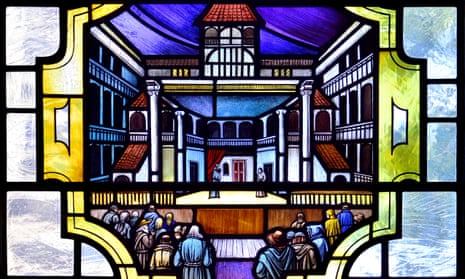Male performers may have dominated the early modern stage, but female investors were a driving force behind one of the foremost playhouses of the 17th century, according to new research.
Academics have discovered that women made up a large part of the financial force behind the Fortune theatre, the great rival to the Globe, partly built by the actor for whom Christopher Marlowe wrote plays, and where Thomas Middleton’s dramas were first staged.
While a few women investors in the Fortune were previously known, it has now been revealed that they made up a third of the playhouse’s financial backers between the mid-1620s and late 1640s. Of 71 investors, including the carpenter who had worked on the playhouse, 24 were women and, from time to time, owned the majority of shares. While some inherited theirs, others purchased them for themselves, despite having no previous connection with the theatre.
Lucy Munro, professor of Shakespeare and early modern literature at King’s College London, told the Observer that, in researching the playhouse, she never expected to discover that women had such a huge financial stake in it. “This challenges the stereotype of the early modern all-male stage and the idea that it’s completely dominated by men,” she said.
“We know that the people who performed in plays at the Fortune were men and boys, but I find it really exciting that these women thought that the theatre was for them, and that it wasn’t just for men.”
The Fortune theatre was built in 1600 by Edward Alleyn, one of the foremost actors of his day, and his stepfather-in-law, Philip Henslowe, the most important English theatre owner and manager of the Elizabethan age. Originally a square, timber-framed building open to the elements, it was located between Whitecross Street and Golding Lane – now Golden Lane – in the parish of St Giles Cripplegate, beyond the northern walls of the City of London.
Its initial resident company was the Admiral’s Men, on whom James I bestowed the patronage of his son, Prince Henry. Audiences flocked to see plays such as Doctor Faustus by Marlowe and The Roaring Girl by Thomas Dekker and Middleton. The playhouse was named after the Roman goddess of fortune but it was destroyed by a fire in 1621, almost a decade after the Globe burned down.
The research has been conducted by Munro and Clare McManus, professor of early modern literature and theatre at the University of Roehampton.
In a forthcoming online post, they write: “In order to finance rebuilding the playhouse – this time in brick – Alleyn created a 12-part lease, issuing full and half shares in the second Fortune to investors who paid £83 6s 8d for a full share and £41 13s 4d for a half share. This would be around £11,000 and £5,500 today, so leaseholders had to be relatively well-off.”
But they add: “Most of these women came from what historians have termed the ‘middling sort’ – those who were neither very rich nor very poor. They were the daughters, wives and widows of London tradesmen, officials and actors. Many of them had enough literacy to leave signatures or complex marks on legal documents such as wills and depositions.” Munro said: “These playhouses were vulnerable but, when it was going well, they could make a lot of money.”
Although the playhouse was rebuilt, it was eventually demolished after the site was sold in 1661 to enable the construction of houses.
The Fortune’s female investors included Margaret Wayte Wigpitt, widow of its bricklayer Thomas, and Elizabeth Pierpoint, a servant whose appreciative mistress had left her two half shares.
While documentation for early modern playhouse investment rarely survives, original lease documents issued by Alleyn are within the archive of his papers at Dulwich College, the charity he founded in 1619.
The academics write: “After his death in 1626, the playhouse leases were managed by the college, and the leaseholders appear in a set of rent books and account books that are preserved at Dulwich.
“These fascinating documents detail the payment – or non-payment – of rent by the Fortune leaseholders, quarter by quarter, between 1626 and 1649, when the college evicted the leaseholders for non-payment of rent during the civil war.
“They present the most detailed evidence that has yet been discovered for the finances of a 17th-century playhouse.”
Asked why the Fortune’s female investment had been overlooked until now, Munro said documents had been “almost hiding in plain sight” in the archives: “They are catalogued, but only in an outlined sort of way. I’d actually come across a reference from a scholar saying that the Fortune’s accounts don’t survive. Well, they do.”
Noting that they also studied wills and other documents at the National Archives at Kew, she believes historians have often stopped researching after reaching 1616, the year of Shakespeare’s death, because they were more interested in him than anything else: “But interesting things happened after that.”
The research project, Engendering the Stage: The Records of Early Modern Performance, has been funded by the Leverhulme Trust.
